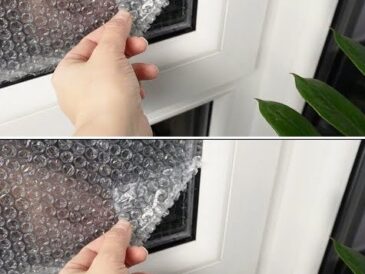When it comes to making the bed, most people follow the same familiar process: wash the sheets, dry them completely—either in a tumble dryer or on the line—and then neatly stretch them across the mattress. But what if there was a different way? A method that could save time, reduce wrinkles, feel refreshing, and even cut down energy costs?
That’s exactly what some people, including your husband (thanks to a tip from his mother), do: they use slightly damp sheets when making the bed. While this might sound strange at first, the practice actually has historical roots, practical applications, and a growing group of fans who swear by it.
So, is there any real benefit to using damp sheets? Or is it just an old-fashioned habit that no longer makes sense in modern times?
Let’s dive into this intriguing home care tradition and explore what experts, housekeepers, and everyday users say about it.
💧 What Does It Mean to Use Damp Sheets?
The method is exactly what it sounds like: instead of waiting for sheets to dry completely, you pull them out of the dryer or off the line while they’re still a little moist. Then, you put them directly onto the bed.
The idea is that as the sheets finish drying in place, the residual moisture helps smooth out wrinkles naturally. No ironing required. Some also claim the dampness gives the bed a cool, clean feeling, making it especially pleasant in warmer weather or for hot sleepers.
🔍 Common Reasons People Use Damp Sheets:
-
To reduce ironing or steaming
-
For a cooler sleep experience
-
As an energy-saving laundry hack
-
For smoother sheet texture
-
Due to tradition or cultural practice
🕰️ The Historical Origins of Damp Sheet Usage
Before high-speed dryers became standard in households, many families air-dried their linens outside. In humid or temperate climates, sheets often came in from the line still slightly damp, especially if the sun disappeared before they dried completely. Instead of waiting another day—or using a heated iron—people began laying the sheets directly on the bed.
Over time, this became a time-saving routine passed down through generations, especially in resource-conscious households. In areas where electricity was costly or unavailable, this method was both economical and effective.
✅ The Benefits of Using Damp Sheets
Surprisingly, this unusual practice offers several practical and wellness-related benefits, especially when done mindfully.
✨ 1. Natural Wrinkle Reduction
One of the top reasons people use damp sheets is that it naturally smooths out creases. As the sheets dry tightly against the mattress, the tension helps eliminate lines, giving your bed a fresh, polished look.
🧺 No ironing. No steaming. Just smooth sheets.
🧊 2. Cooling Sensation for Better Sleep
Some people experience night sweats or live in hot climates. For them, slightly moist sheets can create a temporary cooling effect, making sleep more comfortable without air conditioning or fans.
💡 Tip: Combine with cotton or linen sheets for enhanced breathability.
⚡ 3. Saves Time and Energy
If you’re focused on lowering your energy bill or practicing eco-friendly laundry routines, this method cuts drying time by up to 30%. Instead of running the dryer for an extra 15 minutes to remove every drop of moisture, you skip that step entirely.
Related interest topics:
-
Energy-efficient laundry tips
-
How to reduce electric bill naturally
-
Eco-friendly home habits
🪶 4. Softer Sheet Feel
Some users report that sheets dried on the bed feel softer and less “crisp” compared to fully dried ones, especially when using natural fabrics like organic cotton.
⚠️ The Risks and Downsides of Using Damp Sheets
As with any unconventional habit, there are potential risks involved—especially if the sheets are too wet or if you live in a high-humidity region.
💧 1. Mold and Mildew Growth
The biggest concern is moisture buildup in the mattress or pillows, which can lead to mold, mildew, and even dust mite infestations. These issues not only cause odor but can trigger allergies and respiratory issues.
Important queries covered:
-
How to prevent mold in bedding
-
Is it safe to sleep on damp sheets?
-
Natural solutions for mildew in the bedroom
❄️ 2. Discomfort in Cold Weather
Sleeping on damp fabric in cooler climates may lead to an unpleasant, chilly sleep. For people with joint pain, arthritis, or sensitivity to cold, this could be uncomfortable or even harmful.
🧼 3. Hygiene Concerns
While occasional damp-sheet use may not be a problem, consistent use without proper ventilation can cause your sheets to harbor bacteria or unpleasant odors—especially if you’re not washing them frequently enough.
🧠 What Do Experts Say About Damp Sheets?
Experts in textile care and sleep hygiene have mixed opinions.
-
Home care specialists often emphasize the importance of keeping bedding completely dry to avoid moisture buildup in the mattress.
-
Textile professionals note that sheets are more likely to retain their quality and last longer when dried properly.
-
However, some eco-conscious designers and natural lifestyle advocates believe that using damp sheets can be effective when done with care and in the right environment.
Conclusion: If you’re going to try it, be smart about it.
🛏️ Traditional Bed-Making vs. Damp Sheets
Let’s compare the two:
continue reading in page 2





